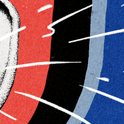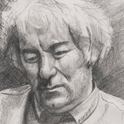Three Oscar-nominated films this year attempt a portrait of England. The concurrence of Stephen Frears's Mrs Henderson Presents, Woody Allen's Match Point and Terrence Malick's The New World is a surprise because, beyond travelogue, England hasn't been a subject for cinema in some time.
Back in the 1950s, the Ealing studio made a series of comedies that seemed bent on capturing something of the English national character. And in the 1980s, the idea of England was used as a starting-point for Merchant Ivory, My Beautiful Laundrette and Derek Jarman's experimental The Last of England. But that idea seems to have fallen from movie favour in the last decade. Ken Loach has set most of his recent films in Scotland or the Hispanic world. Even Mike Leigh's work seems to start with the idea of character rather than nation. America has John Sayles, but England seems to have no equivalent state-of-the-nation filmmaker.
This can't be because the idea of Englishness is of no interest. There has been a steady drip-feed of articles on the subject since Scottish and Welsh devolution at least. A more plausible explanation is the fact that previous films that attempted to capture the character of Albion now seem dated. The popular but now mostly forgotten 1940s films with actors Arthur Askey, Jessie Matthews and Gracie Fields suggested that cheeriness was at the root of Englishness—as, in their very different way, did the Carry On films. Ealing's Passport to Pimlico and The Man in the White Suit put eccentricity at the heart of the nation. Powell and Pressburger's The Life and Death of Colonel Blimp seemed to say that tolerance was to be cherished in the English. And reliability was at the core of movies like Noel Coward's In Which We Serve.
Cheery-eccentric-tolerant-reliable was a decent enough stab at a national portrait, but it was a portrait in response to war. By the late 1950s, it was being queried. The most influential dissenter was Scottish director Lindsay Anderson. In This Sporting Life, England was dirt poor and sexually repressed. His later films If… and Britannia Hospital made no attempt to hide his hatred for what he saw as the timidity, inertia and conservatism of his adoptive nation.
Anderson begat Derek Jarman's equally enraged denunciations of what he saw as an English garden defiled by Thatcherism. Both were master directors, but in hindsight, this timid-inert-conservative "essentialism" was an equal, though opposite, counterpart to the cheery-eccentric-tolerant-reliable brigade. That's why Hanif Kureishi and Stephen Frears's film My Beautiful Laundrette was such a breath of fresh air. There had been other 1970s and 1980s films about class and race, but My Beautiful Laundrette was a new standard-bearer which showed that there was nothing at the root of England at all. The country was a mosaic of new Pakistanis, Thatcherite entrepreneurs, gays and neo-Nazis having fun and games as a rump white middle-class sat at home and fumed. The state of the nation was multiple. For a generation—until 9/11 or the recent debate about multiculturalism, perhaps—this view held.
Does it now? What is the England we see in the Oscar films? Woody Allen's England is the least interesting. Visually it is a tourists' view, the London landmarks serving as backdrops to the story. Match Point needed to be set in a world where a rich elite is detached from the rest of society. But Allen fails to capture the way these people talk or their codes of behaviour. He's interested in ethics but his film is socially empty.
Compare this national blankness to Frears's Mrs Henderson Presents, which is more interested in England than perhaps any film since Laundrette. And in a similar way, the nation is seen as a collage of energised performers and entrepreneurs. Judi Dench's theatre owner Laura Henderson gets things done not by going through official routes but because she takes afternoon tea with the lord chamberlain: the blue-blood way. Bob Hoskins's Vivian Van Damm is the theatre's decent impresario, whose conservative Jewishness is as quintessentially English as Dench's Henderson. Will Young plays a gay choreographer. Out of this braid of aristocracy, Judaism and homosexuality, England is portrayed as vibrant and multiple, even in the 1930s.
Terrence Malick's The New World is a retelling of the settlement of America and the John Smith/Pocahontas romance, so you'd expect it to be only secondarily about England. Much of the glorious first half of the film is like a prayer to the swamplands of Virginia. But in the second half the story follows Pocahontas and her husband John Rolfe to the English court of James I. England is portrayed as a world of gateways. Nearly every scene is framed by one, or features a character passing through one. For Malick, England is obsessed by the idea of home, of arriving, of framing nature as something to be seen from inside looking out. This is an art and garden historian's view of England, and it works brilliantly in The New World. But it's not only the English bits of this film which seem to say something about England. The New World is the most romantic film I have ever seen, constantly externalising mental states, enraptured by the rush of feeling caused by nature and by love, intoxicated by sensation. It is not in any way a state of the nation film, at least not of the English nation. But it is a masterpiece nevertheless, one of the most thoughtful films ever made, and many of its thoughts derive from England.











